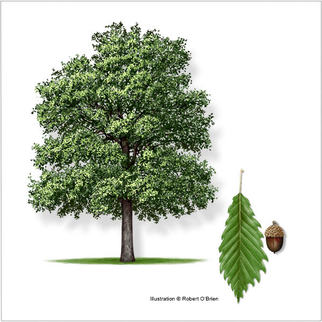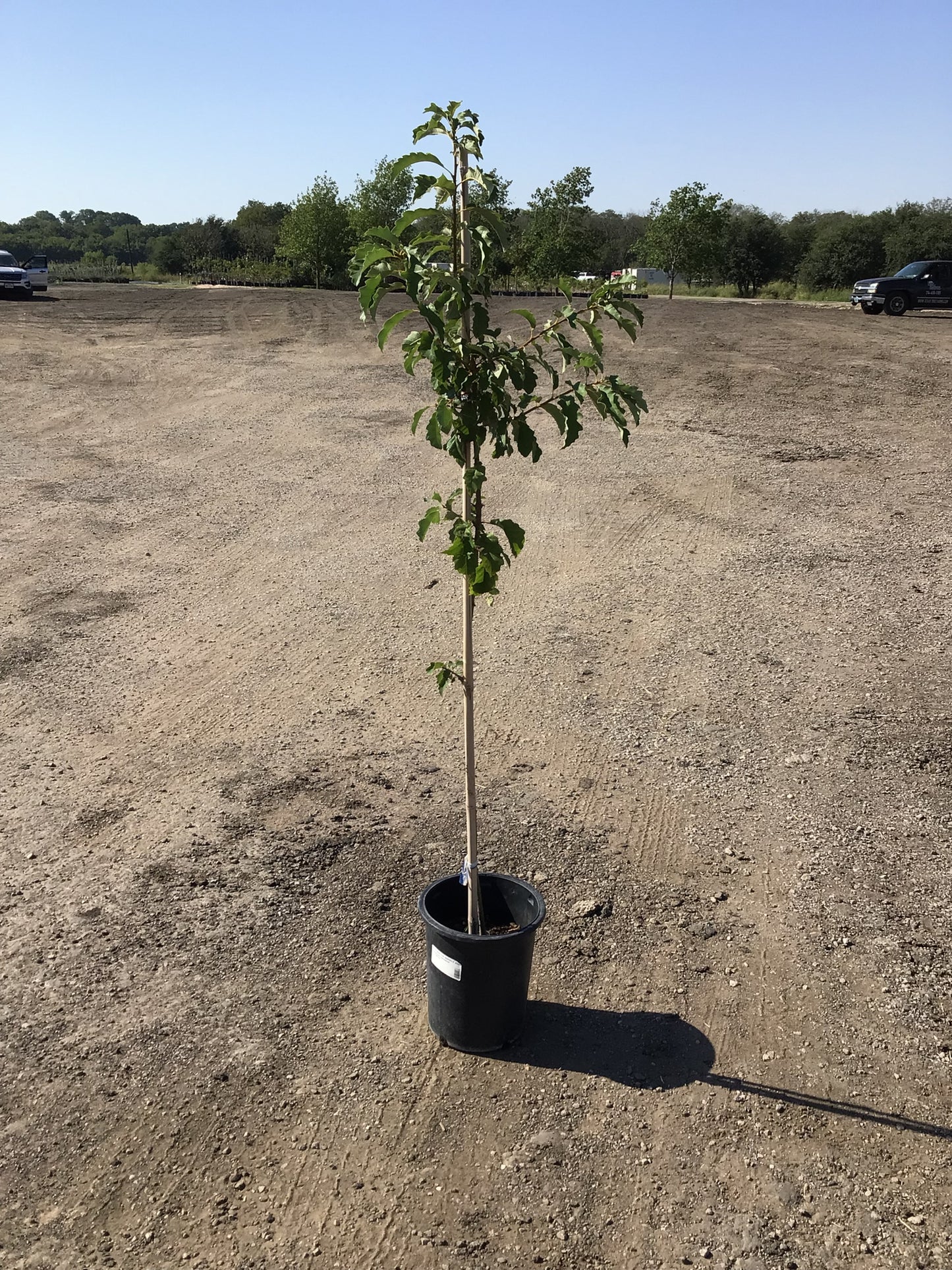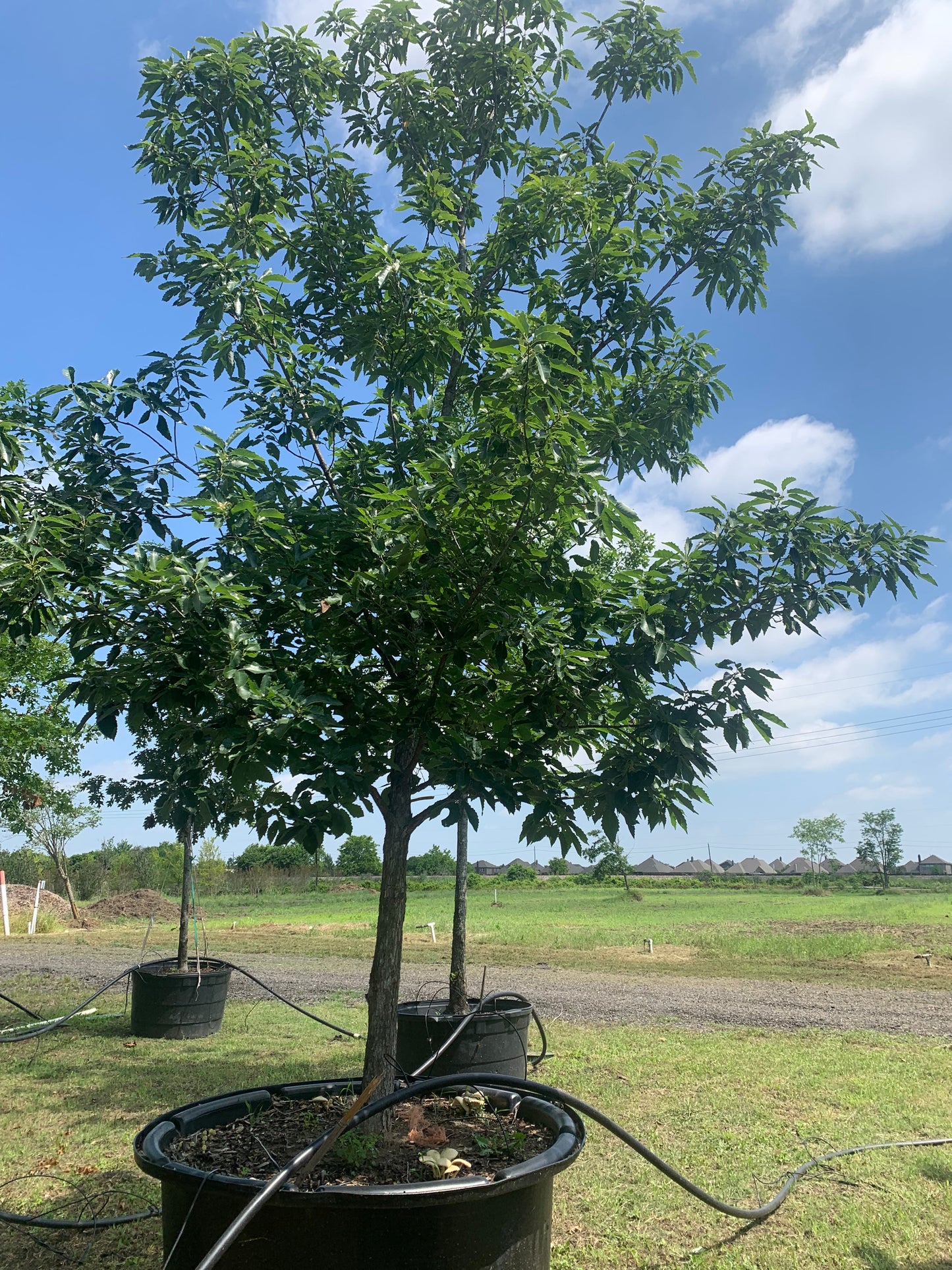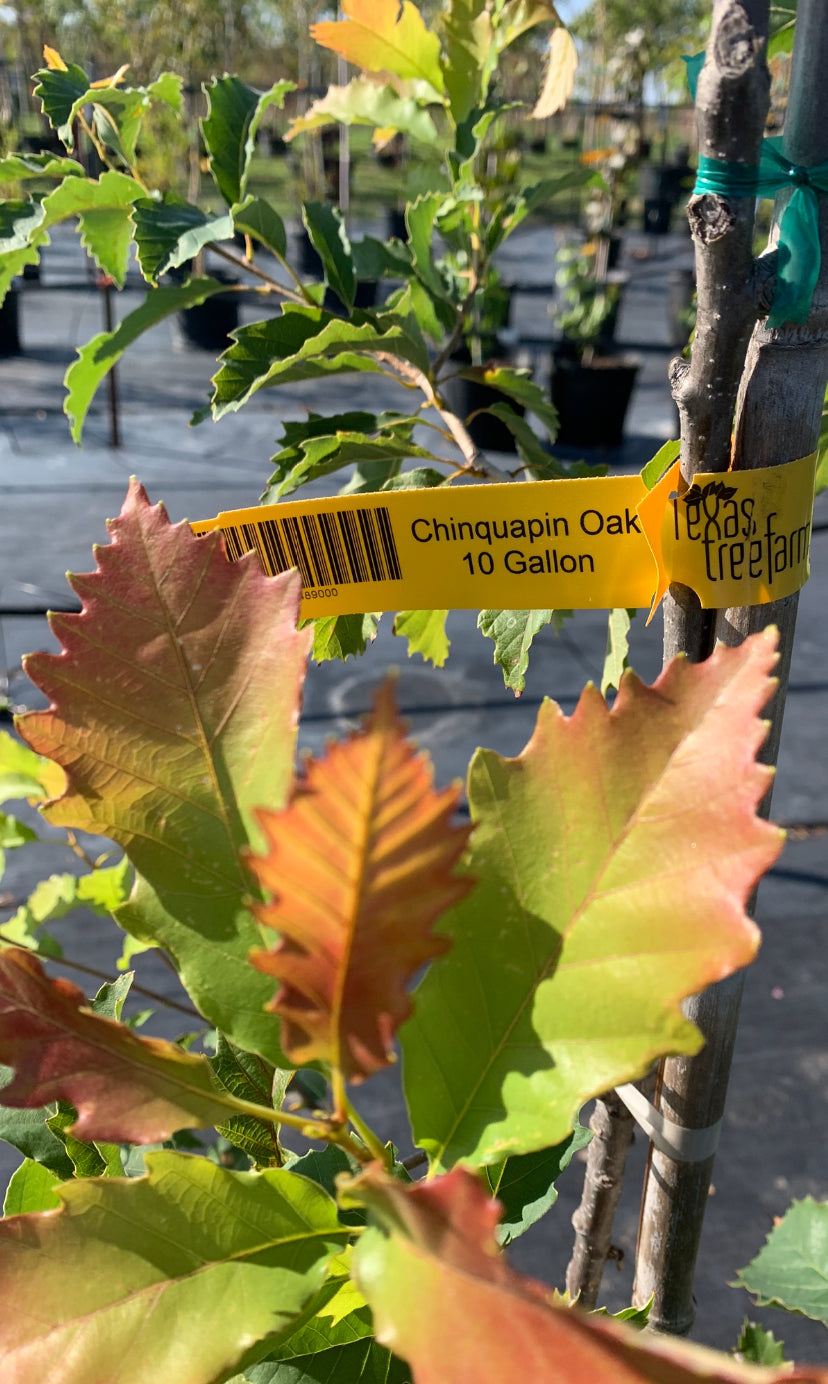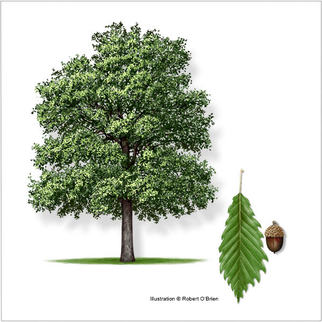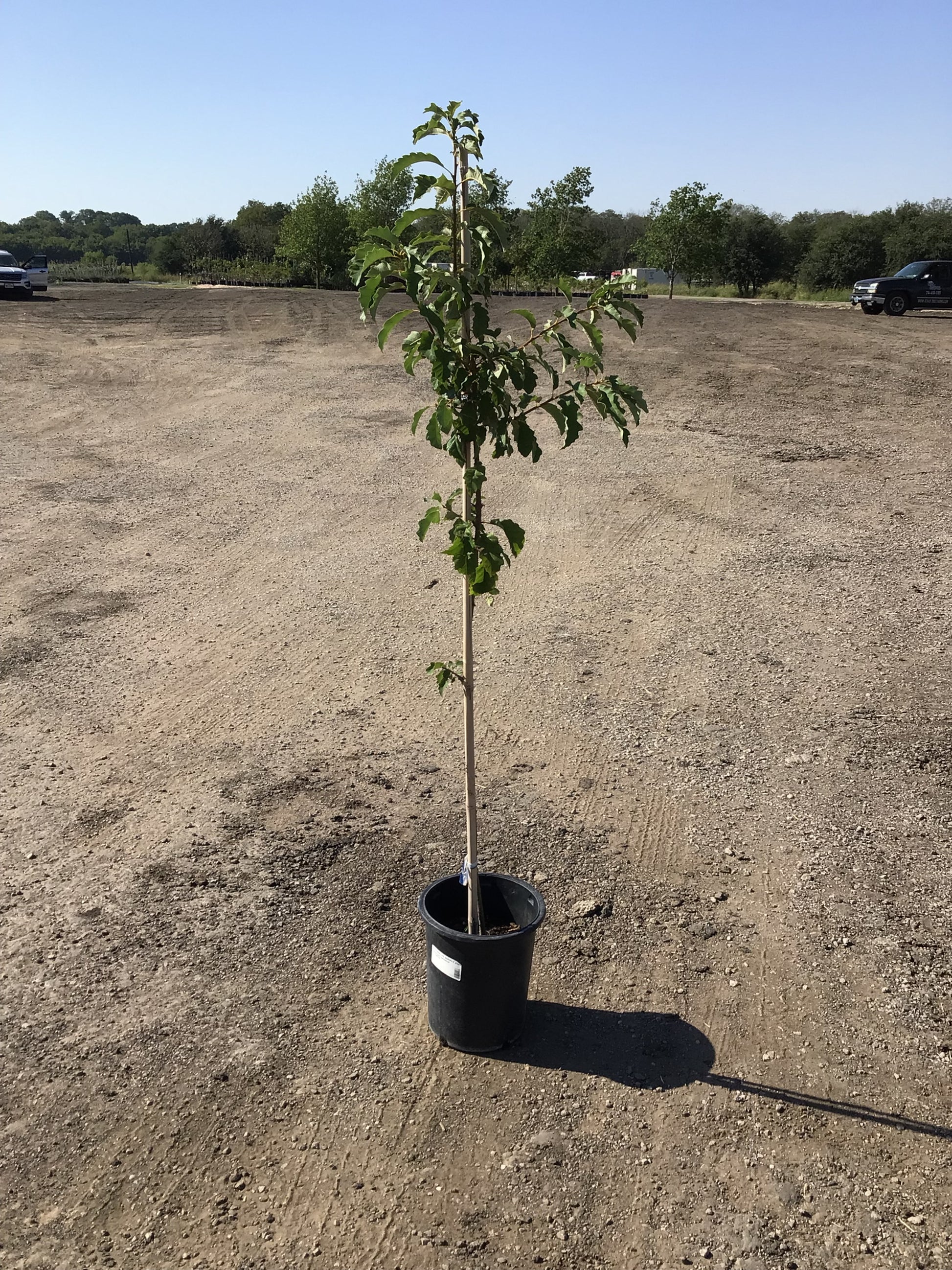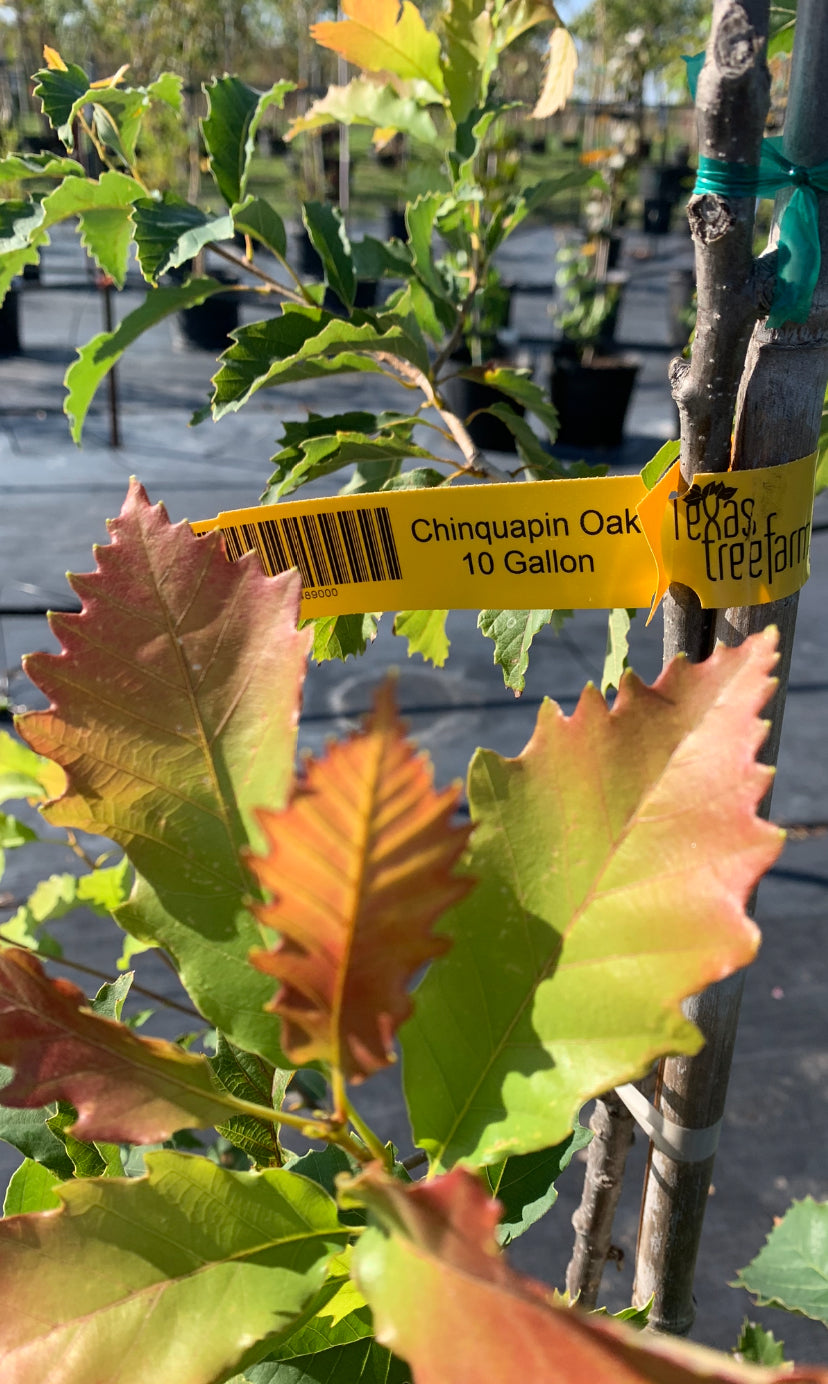Chinquapin / Chinkapin Oak
Chinquapin / Chinkapin Oak
Description: The Chinkapin Oak is a deciduous tree with a rounded to irregular crown and a moderate growth rate. It typically reaches heights of 40 to 70 feet (12 to 21 meters) and spreads of 40 to 60 feet (12 to 18 meters) at maturity. The leaves are simple, alternate, and oblong with toothed margins, resembling the leaves of chestnut trees. In the spring, the foliage emerges as light green, turning to dark green in summer and often developing attractive yellow or golden-brown hues in the fall. The bark is light gray with deep furrows and ridges, adding visual interest to the tree's appearance.
Best Growing Zones: Chinkapin Oaks are well-suited to a wide range of climates and growing conditions. They thrive in USDA hardiness zones 4 through 9, making them adaptable to both cold and warm climates. Chinkapin Oaks prefer full sun exposure but can tolerate partial shade. They are relatively drought tolerant once established and can withstand periodic flooding, making them suitable for planting in floodplain areas or near bodies of water.
Soil Requirements: Chinkapin Oaks are adaptable to a variety of soil types, including clay, loam, and sandy soil. They prefer well-drained soil but can tolerate occasional periods of wet soil, especially when mature. Chinkapin Oaks are tolerant of alkaline soil conditions and are often found growing in limestone-rich soils. They have a deep taproot system that helps them access water and nutrients from the soil, making them relatively drought tolerant once established.
Maintenance: Chinkapin Oaks are relatively low-maintenance trees once established. They require minimal pruning, primarily to remove dead, diseased, or damaged branches or to shape the tree for aesthetic purposes. Pruning is best done in late winter or early spring before new growth begins. Water young trees regularly during the first few years after planting to help them establish a strong root system. Mulching around the base of the tree helps retain soil moisture and suppress weeds.
Landscape Use: Chinkapin Oaks are valued for their ornamental value, wildlife habitat, and shade-providing qualities. They make excellent shade trees for parks, large landscapes, and naturalized areas. Chinkapin Oaks are also attractive to wildlife, providing food and habitat for birds, squirrels, and other animals. Their deep taproots make them suitable for planting in urban and suburban landscapes, where they can help stabilize soil and prevent erosion. Additionally, Chinkapin Oaks are sometimes used in agroforestry and reforestation projects due to their tolerance of a variety of soil conditions.
